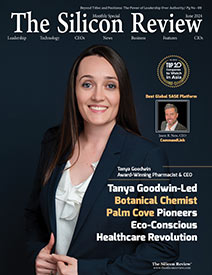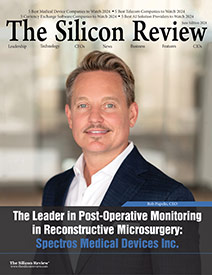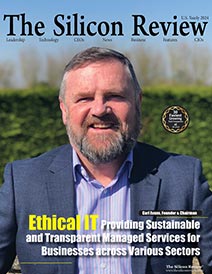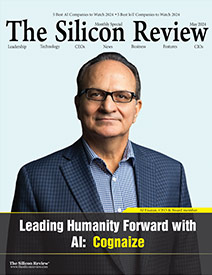30 Most Valuable Brands of the Year 2022
‘We’re on the path to becoming a real force in the HPC segment’: Axel Kloth of Abacus Semiconductor Corporation
The Silicon Review
![]()
“We are designing and engineering a number of products that all work together and allow for integration into existing and legacy systems.”
The Semiconductor industry has changed very drastically over the past decades. In the beginning, every semiconductor company had its own fabs (or fabrication units). Today, the landscape is totally different, and the industry has created one set of companies that design and engineer semiconductors (the so-called fabless semiconductor companies), and the other set represents the fabs (companies that actually make the semiconductors). Apple, Qualcomm, and NVIDIA as well as AMD are examples of fabless semiconductor companies, whereas TSMC and GlobalFoundries as well as Samsung represent the fabs. Specialty processes such as those requiring non-Silicon wafers still exist, and the memory makers such as Micron, Samsung, and SK Hynix still are vertically integrated (i.e. they have their own fabs for their designs). A vast majority of companies are fabless that rely on the fabs. Abacus Semiconductor Corporation (ASC) is a typical fabless semiconductor company; it only designs and engineers products. The company serves clients across the United States.
The Silicon Review reached out to the founder and Chief Executive Officer of ASC, Axel Kloth, and here’s what he had to say.
Interview Highlights
Q. How do ASC-designed products maintain a performance lead over traditional solutions?
We have deployed a novel system architecture to solve the scale-out problem. Today’s processors are incredibly good, but they are not designed to communicate directly with each other even within a rack (a cabinet that holds the servers that makes up the basic building block of a data center). The state-of-the-art in current processors does not take into account that most computational challenges require thousands of processors and accelerators such as GPGPUs (General-Purpose Graphics Processing Units) and accelerators for Artificial Intelligence and Machine Learning. Due to the current restrictions in connecting those accelerators to processors, most users and most applications cannot extract the performance out of a system that they had anticipated. Some applications in High Performance Compute (HPC) deliver five to seven percent of the theoretical performance that the system should show. We have re-architected the system to allow for direct connection of processors, accelerators, and smart memories. As a result, our advantage is inherent, and it’s patent-pending.
Q. What are the various types of processors and memory subsystems that ASC designs?
We are designing and engineering a number of products that all work together and allow for integration into existing and legacy systems. The first product is our Server-on-a-Chip, and it is exactly what the name implies. This processor combines everything that makes up a modern server on one chip: application processors, network offload processors (also called DPUs), mass storage processors, and all glue logic plus our Universal High-Performance Interconnect (UHI) interface. To complete a server, DDR5 memory or our smart multi-homed memory (our second product) must be added. The smart multi-homed memory, also called Heterogeneous RAM or HRAM, is a smart memory subsystem with a very high capacity and very high performance. It has four UHI interfaces and can connect to four processors or accelerators, or more HRAMs. Each UHI interface supports over 200 GB/s of full-duplex bidirectional traffic. Beyond that, we are working on a Math Processor for Matrix Math, Tensor Math, and all kinds of transforms such as Fourier Transforms. Another product is our Database Processor, which distinguishes itself from other processors by providing extremely high performance in all In-Memory Database applications due to its parallelism and its massive input and output bandwidth. We are working with an in-memory database company to optimize its firmware for these types of applications. We are using the same processor with different firmware for a general-purpose Application Processor.
Q. Will ASC be expanding, bringing on any new products that we should be aware of?
We will not only be expanding our portfolio, but also be working with partners so that they can integrate our UHI interfaces in their products to reap the full benefits of their technology in any system that deploys our system architecture. We are actively building this ecosystem and are working with partners that do not compete with what we have or what other partners of ours develop.
Q. How do you see ASC changing in five years, and how do you see yourself creating that change?
We believe that ASC is on a path to becoming a real force in the High Performance Compute segment, so that more researchers can use deskside supercomputers to solve their computational challenges at a reasonable price while being simpler to use and allow data-center sized supercomputers to scale out much more linearly in performance. We believe that if a data center operator purchases 100000 servers to offer High Performance Compute-as-a-Service, then that operator should be able to extract the full performance from that purchase for a very vast majority of applications that his customers want to run on this large installation.
Q. Is there anything else you want us to highlight that we might have missed?
The term High Performance Compute is often mistaken or misunderstood. I would like to point out a few applications that run on supercomputers that have a direct impact on humankind:
- Weather forecast (more precise, longer-term, better spacial resolution)
- Climate modeling and mitigation
- Finding better battery chemistry and better materials for anodes and cathodes so that EV batteries last longer, can be charged faster, and are less susceptible to thermal runaway
- Finding weaknesses in future pathogens and using those to develop vaccines and medications to fight those diseases, and that includes finding cures for cancer and Alzheimer's, and similar diseases
- Help find solutions for food and water distribution for the nearly eight billion people on this planet
- Improve safety, security, energy efficiency, and other features for cars and aircraft through better and more thorough simulations
- Improve the understanding of Computational Fluid Dynamics (CFD), which is important to optimize aircraft and their engines.
Axel Kloth | Founder & CEO
Axel Kloth is a physicist and computer scientist and has contributed to many inventions in processors, communication, cache coherency, security, cryptographic functions, and authentication. He is a serial entrepreneur and has been instrumental in raising funds for his companies. Axel has built teams and retained them for periods that vastly exceed the industry average. Multiple articles and books as well as over 40 patents prove that he can make his message and ideas understood by the public.









